The two-seater Mercedes-Benz 300 SLR race car (factory code W 196 S) was used in the 1955 World Sports Car Championship, which he won. His dominance was prematurely stopped after the Le Mans crash, which killed the driver and 82 spectators.
The famous era of the prewar “silver arrows” W 25, W 125, W 154 and W 165 continued after the end of World War II and the years of German industrial renewal with race cars with the factory designations W 196 R and W 196 S, known as Mercedes- Benz 300 SLR. Initially, the abbreviation was written with a hyphen (SL-R) and meant Sport Leicht-Rennen (Czech light sport racing) and only later was shortened to SLR.
It appears the 300 SLR (W 196 S) is based on the name and appearance of the 300 SL W 194 race car from 1952 and the 300 SL Gullwing sports touring car. In fact, it is technically related to the Mercedes-Benz W 196 R Formula 1 race car, which won the championship in 1954 and 1955 and is powered by a 2.5 liter inline eight cylinder engine. The head of design at Daimler-Benz, Rudolf Uhlenhaut (1906–1989), played an important role in the development of all these cars.
Three liter eight cylinder inline
According to the regulations for Formula 1 cars, engines with a capacity of 2.5 liters without a compressor and 0.75 liters with a compressor were allowed for the 1954 and 1955 seasons. Mercedes developers, led by Rudolf Uhlenhaut, chose a version without a compressor. The M 196 R inline eight cylinder designed for Formula 1 racing cars W 196 R has a volume of 2,496 cm3 (drilling x steps: 76 x 68.8 mm) and power 256 to 290 hp. The M 196 S engine (pictured) is set up for the 300 SLR, in which the bore and stroke are increased to 78 mm, so the volume is increased to 2,982 cm3. With direct fuel injection, it has a rated output of 276 hp (203 kW) at 7,000/min and an hourly output of up to 310 hp (228 kW) at 7,400/min. Torque peaked at 311 Nm at 5,950/min.
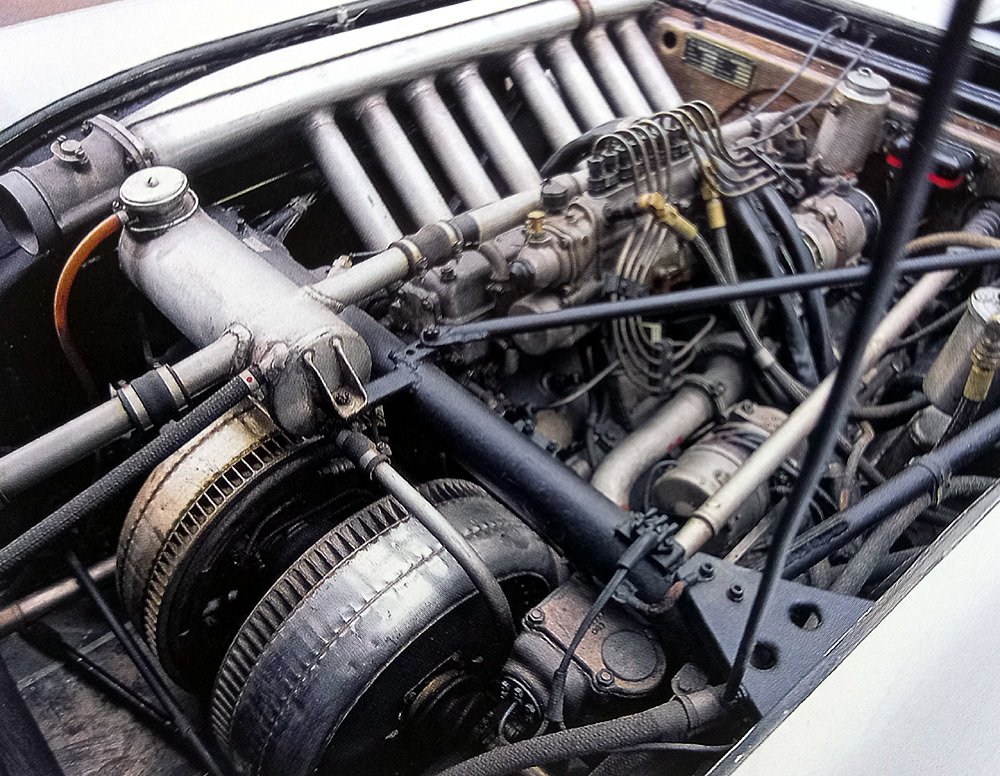
The M 196 S eight-cylinder engine has a desmodromic, non-return, DOHC valve family with two valves per cylinder. The engine mounted longitudinally behind the front axle is tilted to the right by up to 53°, allowing the front hood to be lowered. To reduce unwanted crankshaft torque, the engine is assembled from two four-cylinder blocks and the output power is drawn from the center of the engine.
Electron body
Formula racing Mercedes W 196 R comes in two body versions. The single seat monopost has exposed wheels and weighs only about 650 kg. The Monza version with improved aerodynamics, called the Stromlinie by the Germans, had wheels covered with fenders, one more seat in the middle and a dry weight of around 700 kg. The exhaust, like the monopost, points to the right. The body of the W 196 S (pictured), made of the lightweight magnesium alloy Elektron is based on the aerodynamic Monza and is distinguished primarily by the two seats (driver’s seat on the left), the headlights hidden under a transparent cover and for some tracks a folding rear spoiler, used to slow down car. The bulge above the front wheels and the “bulge” on the right side of the hood, which was necessary to create room for the tilting engine, have been preserved.
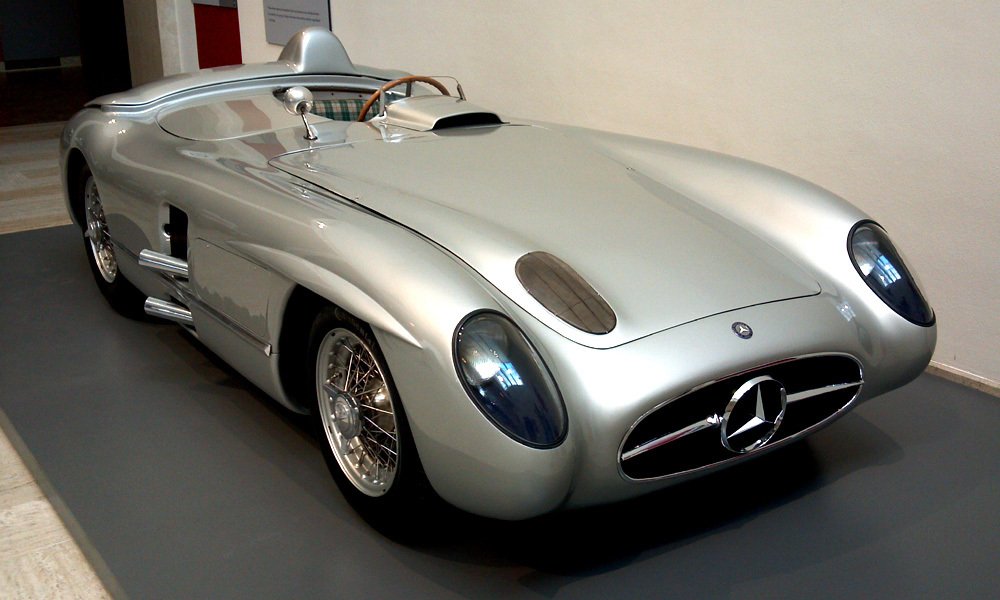
The Mercedes-Benz 300 SLR Roadster has a wheelbase of 2,350 mm, a length of 4160 mm, a width of 1,625 mm (without exhaust) and a height of 1,040 mm. The data holds true for Monza, but the 300 SLRs certainly have very similar dimensions. The Roadster weighs about 900 kg. For some races, such as the Targa Florio, the front passenger seat has been closed, improving aerodynamics.

Until the fight
The Mercedes-Benz 300 SLR was intended for the World Sports Car Championship, which first took place in 1953. Ferrari won the first two years, but in 1955 beat Mercedes’ plans. In 1955, the championship had six races in the program. Mercedes has yet to compete in the first two races. The Argentine won 1,000 km in Buenos Aires in a Ferrari 375 Plus and 12 hours in a Sebring Jaguar D-Type. On May 1, 1955, two Mercedes-Benz 300 SLRs stood at the start of the Mille Miglia race on the 1,000-mile (1,600 km) Brescia-Rome-Brescia track and finished in the top two. He won car number 722, which was driven by experienced Formula 1 driver Stirling Moss and his partner was British automotive journalist Denis Jenkinson (pictured). He prepared records which he used to navigate Moss and is the forerunner of today’s navigators in rally racing. The winners achieved an average speed record of over 157 km/h and Juan Manuel Fangio finished second in the same car and number 658.
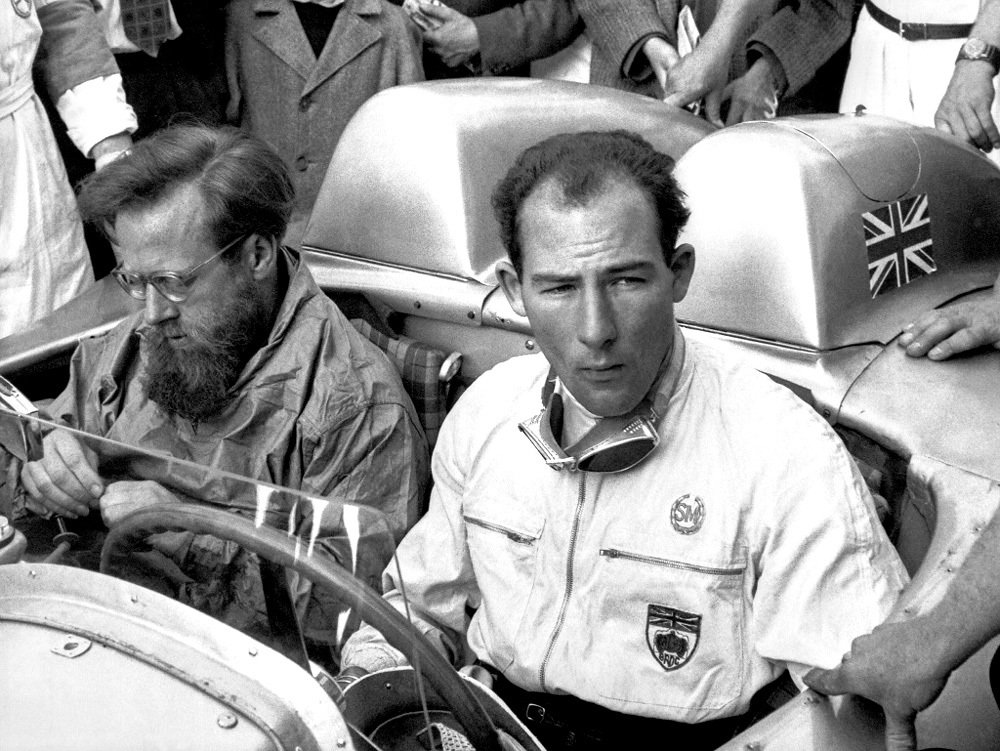
The Mercedes 300 SLR also won the RAC Tourist Trophy in Dundrod, Ireland and the Targa Florio in Sicily, winning the 1955 World Sports Car Championship.
Le Mans – the ruin of the century
On June 11, 1955, Mercedes deployed three two-member crews in a 24-hour race at Le Mans. The biggest star of the German team is Juan Manuel Fangio from Argentina and the co-driver in car number 19 is Stirling Moss. The second car was driven by Frenchman Pierre Levegh (then 49 years old) and American John Fitch. Karl Kling from Germany and Andre Simon from France sat behind the wheel of the third car. Two hours and 19 minutes after the start, race leader Mike Hawthorn in a Jaguar D-Type decided to stop at the mechanics at the last minute. The sharp depression of the powerful disc brake pedal created problems for Lance Macklin, who followed him back with Austin-Healey with weaker brakes. He had no choice but to dodge sharply to the left, but Pierre Levegh in a Mercedes 300 SLR rushed there at about 250 km/h. Neither the drum brakes nor the slowed rear spoiler could prevent the Austin-Healey’s rear end from hurling through the crowd. Its high magnesium electron body begins to burn and absorb the fuel. Levegh died in the accident and was with him more than 80 spectators, including small children. This incident became the most tragic accident in the history of motorsport. Surprisingly, the race continued, with Hawthorn winning and Mercedes pulling both cars from the race.

Uhlenhaut car
Two of the nine Mercedes-Benz 300 SLRs produced were converted into coupes (pictured) capable of operating on public roads. Rudolf Uhlenhaut, creator of the 300 SLR race car, opted for a basic roadster shape for the coupe, but added a solid roof with panoramic front and rear windows and hinged doors similar to the 300 SL Gullwing (W 194). The weight of the coupe increased to 1,117 kg. One of the two coupes (also called the SLR/SL hybrid) was used by Uhlenhaut for his personal use. This coupe is capable of reaching a speed of 290 km / h and in 1955 became the fastest passenger car in the world. The coupe was meant for the Carrera Panamericana race, but participation was canceled following the Le Mans crash.
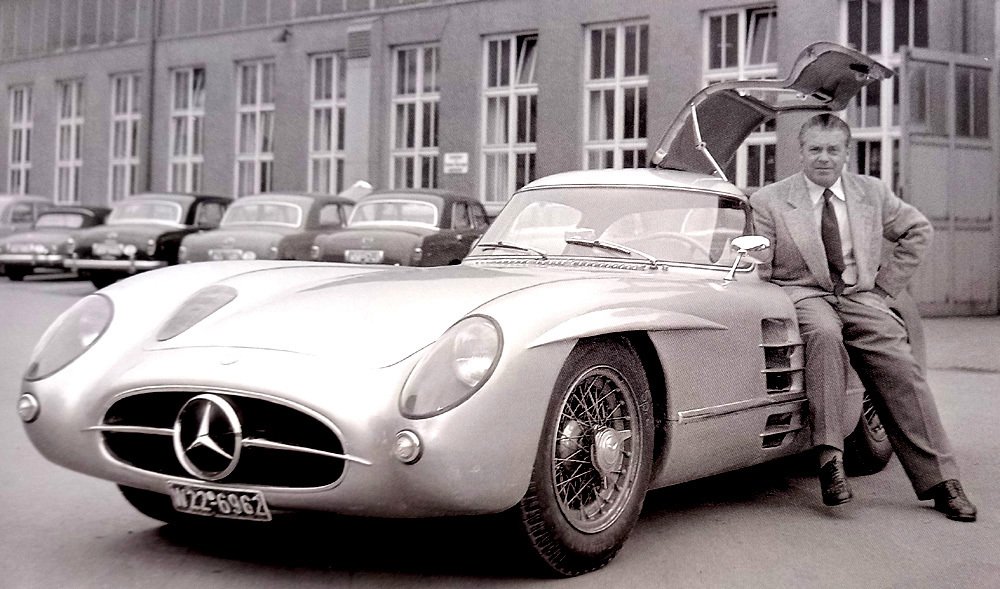
It was rumored that when Uhlenhaut rushed his 300 SLR coupe down the highway for a meeting, he was covering the distance from Munich to Stuttgart (220 km) per hour. The Uhlenhaut Coupe has been preserved and is on display at the Mercedes-Benz Museum in Bad Cannstatt. The twins are kept in the warehouse of the automaker Mercedes-Benz.

“Hardcore zombie fan. Incurable internet advocate. Subtly charming problem solver. Freelance twitter ninja.”

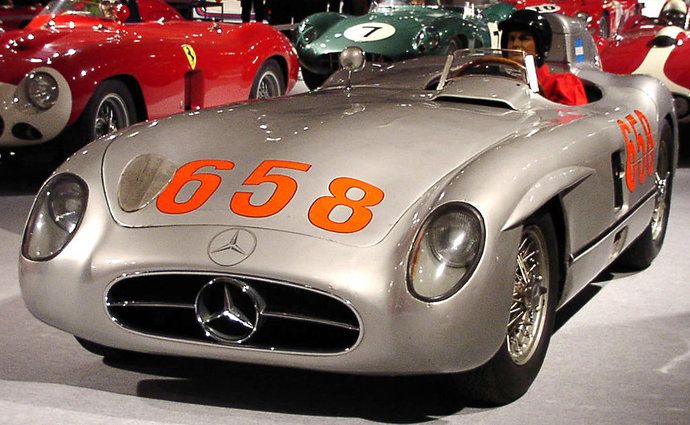



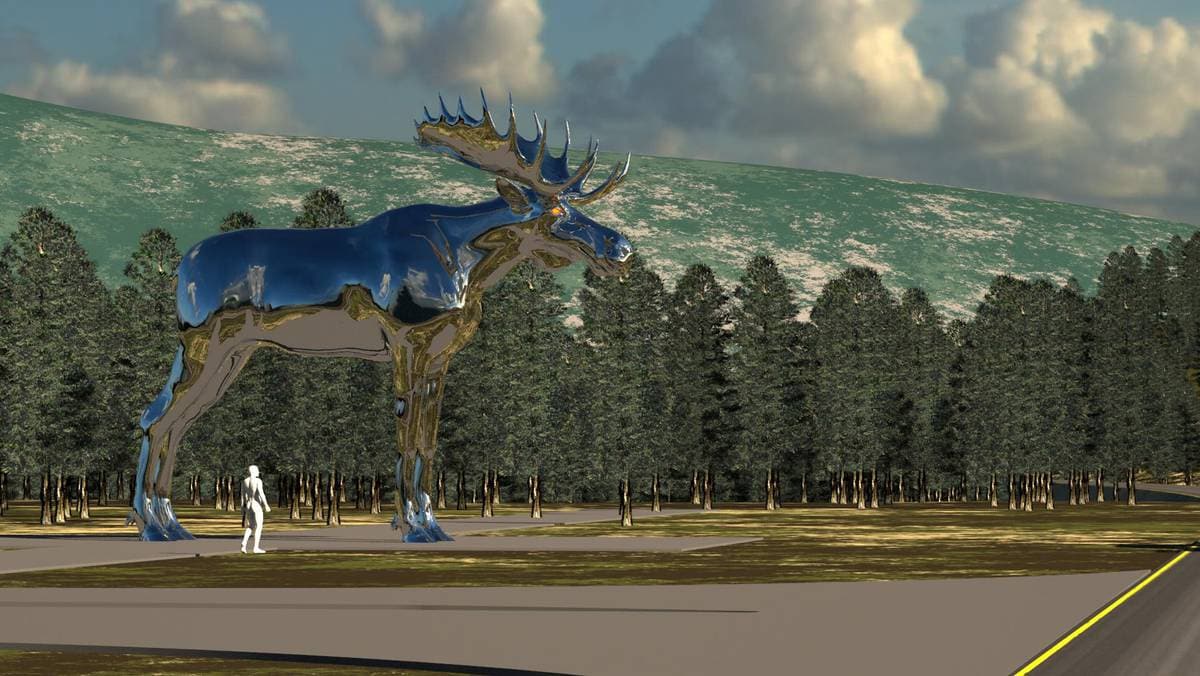

:quality(70):focal(2632x1616:2642x1626)/cloudfront-eu-central-1.images.arcpublishing.com/mentormedier/ZNNRYRVNU6TUOQBBL22PE3O37M.jpg)